#usaffe
Explore tagged Tumblr posts
Text

USAAF #Boeing B-17 Crewmen wearing RAF #goggles with sun visors pose with their high altitude gear at Polebrook, 1942. ➤U.S. #AIRCRAFT SERIES: https://dronescapes.video/US
#youtube#aircraft#airplane#aviation#dronescapes#documentary#military#aviation history#ww2#wwii#b 17#b 17 flying fortress#flying fortress#crewmate#RAF#USAFF
91 notes
·
View notes
Note
heyyy, since you said youd like to tell me more about that japanese occupation thing, i am here requesting anything else about it just cuz you seem to have lots of fun explaining it!! :3
1940s : a filipino perspective
∘���✧ ─── • ✧ • ───✧ ₊∘
oh my god !!!
thank you SO much for this ask!!!
alr alr i'll actually get started now
TWS: blood, war, injury, bombings, rape, murder, general war-crime stuff, HEAVY torture
ˏˋ°•*⁀➷ 1941: the start of fear
japan, aspiring to unite the countries in asia into the greater east asia co-prosperity sphere, called GEACOPS for short, had occupied manchuria already by the 1940s, and the philippines was the next thing japan wanted.
but the philippines was already occupied and colonized by the americans -- so this lead to the famous bombing of pearl harbour on december 7, 1941. in my textbook, here's an excerpt of the news in the honolulu star bulletin:

this was very strategic, as this was the largest american military base in the pacific, therefore cancelling out america disrupting japan's takeover as they were recovering from the bombing.
USAFFE (united states armed forces in the far east) were an army of filipino and american soldiers organized by general douglas macarthur, but were no match for the japanese forces. marching from north and southeast, the japanese moved toward manila and occupied the city.
an account of the pearl harbour bombing in the philippines by lourdes reyes montinola states:
on december 8, 1941, feast of the immaculate conception, we were on our way to church when news of the bombing of pearl harbour came. that same evening, a piercing siren warned us of an aerial attack--the first of a hundred we were to experience. we crouched in fear as the enemy dropped the first bombs, and our defenders fired anti-aircraft guns . . .
we remained unaware of impending tragedy until the day manila was declared an open city. we did not realize how bad things were going to be until we saw enemy soldiers carrying white flags with the red sun slowl passing through taft avenue . . . soon after, our house was commandeered by the japanese as were many other residences on vito cruz and taft avenue . . .
general macarthur declared manila an open city on december 26, 1941, which means it has been abandoned by its defenders. the japanese invaders, however, continued bombing, until vital installations and buildings of manila were gone. on new year's day 1941, USAFFE retreated into the hills and forest of bataan in the west, foreshadowing an even which will eventually be called the most inhuman atrocity in world war ii -- the bataan death march.
in the afternoon before christmas day, december 24, 1941 amid heavy bombings in the city the national government headed by quezon* and osmeña* were evacuated to the island fortress of corregidor. secretary of justice jose abad santos, general basilio valdes, and colonel manuel nieto were with them. manila was left under the care of jose p. laurel, the acting chief justice and the city mayor, jorge vargas. at the malinta tunnel in corregidor, quezon and osmeña took their oath for their second term as president and vice president of the philippine commonwealth*. after a few days the group left for australia and then for the united states.
ˏˋ°•*⁀➷ surrender and the open city
moving on to the horrific death march in bataan, soldiers were imprisoned by the japanese. but with no provisions, they were then ordered to walk to camp o'donnel, a concetration camp in capas, tarlac, and their march reached a whopping total of 126 kilometers.
but before that could happen, first, on april 9th, 1942, the 75,000 strong USAFFE soldiers in bataan laid down their arms, surrendering to the japanese. may 6th, 1942, the last remaining stronghold, corregidor, was also surrendered by general wainwright.
ˏˋ°•*⁀➷ the horrors of bataan
to understand the terrible nature of this event, you must understand that no one had water. no one had food. no town could offer the dehydrated, starving filipino and american soldiers food or water or risk being beat by the japanese. escape was impossible, as the japanese shot down whoever attempted to do so. not even dirty canals or wells were available to men for drinking water. the dead were left to grow hot in the sun by the roadside, and if you were nearly dead the japanese would just shoot you and end it already. watches, rings, fountain pens, everything was looted by the japanese soldiers from the USAFFE men.
of the group that started in bataan, 10,000 died. more died in the concentration camp.
from san fernando, surviving prisoners were densely packed into boxcars with no ventilation and brought to capas. as the trains moved to their location under the hot sun, the boxcars became ovens that cooked the men inside alive.
six kilometers were left after their trip, that were once again agonisingly walked by the soldiers. 15,000 died of hunger, malaria, diarrhea, and more executions. a war veteran by name of quirico v. cadang shares his experience in his memoirs:
the earlier mentioned jose p laurel now acted as president of what is called the puppet government -- named after the japanese's puppetry of the new president. laurel was actually doing well in regards to running the country and reducing harm done, and allowed philippine history to finally be taught in schools. this government, the japanese-sponsored republic, was inaugurated on october 13, 1942.
beheadings, cutting of throats, and casual shootings were the more common actions of japanese war atrocities--compared to instances of bayonet stabbing, rape, disembowelment, rifle butt beating and a deliberate refusal to allow the prisoners food or water while keeping them continually marching in tropical heat. falling down or inability to continue moving was tantamount to a death sentence, as was any degree of protest.
ˏˋ°•*⁀➷ the state of the government
economy was at an all time low during the occupation -- food and water scarce, as money was used to repair bombed buildings and such. prices soared in result.
the japanese kempeitai raided houses with unregistered radios, whos owners were then imprisoned in fort santiago, and inhuman punishments were meted out to them as a daily exercise.
failing to bow to the japanese sentries stationed at street corners resulted in harm to whoever had done so -- but that was not the main source of fear. the spy was.
filipinos could also be spies for the japanese -- called the makapili (literally meaning "choosy" or "the one who chooses"). he was to identify rebels (called guerrillas) and those identified would become targets and would be executed accordingly.
many years after the war, the abuses done to filipino women came to light. the "comfort women" were used to relieve soldier's sexual urges, and were often gathered into houses, even schools to be raped over and over every day. the infamous pulang bahay (red house) is the most well known place where this happened.
remedios fellas, 72, presented her story in a book entitled "the hidden battle of leyte: the picture diary of a girl taken by the japanese military." i will not describe anything in the book, as i deem it perhaps too graphic for this blog and i don't want people to get scared off. but i will say that stories like these were truly horrible, and no woman should ever suffer like this as spoil of war ever again.
by 1945, the americans were ready to return. after a bit of island-hopping (and subsequent victories), the leyte gulf war commensed. the american fleet, composed of 650 ships and 4 army divisions, cleared the area and subdued the japanese troops. from october 24 to 26, the battle for leyte gulf took place. the battle at surigao strait ended with the japanese annahilated. the battle of samar, after an endless day of fire and shooting, the americans had the upper hand. leyte, liberated on october 26th, 1945, was now the temporary capital.
the guerrilla / resistance movement was the main source of rebellion, monitoring enemy activity and reporting to general macarthur, to carry out assaults against the japanese military, and to kill japanese sympathizers and spies.
ˏˋ°•*⁀➷ freedom in reach
manila's liberation finally took place on january 9th, 1946, as the americans surprised the japanese with a landing of troops in lingayen gulf. on february 3, the troops entered manila. freeing prisoners, over 1000 were saved from the bilibid prisons -- and these prisoners were those of bataan and corregidor.
seeing the futility of their situation, the japanese committed a final horror before the battle begun -- the manila massacre. violent mutilations, rapes, and murders took place. filipinos were gathered into houses to be shot or burned down, and women were mass raped. a japanese battalion order dates february 13th reads:
when filipinos are to be killed they must be gathered in one place and disposed of with the consideration that ammunition and manpower must not be used to excess. because the disposal is a troublesome task they should be gathered into houses scheduled to be burned or demolished. they should also be thrown into the river.
about 100,000 of the one million residents in manila died in the absolute massacre. 1,000+ us soldiers were also part of the casualties while 5,565 were wounded. 16,000 japanese soldiers died as well, mostly sailors. the battle of manila was recorded as the fiercest urban fighting in the entire pacific war.
when in class, we watched a video of this massacre -- manila was gone. razed to the ground. on february 23rd -- my own birthday -- the fighting stopped. buildings gone. ground dirty with blood of filipinos, americans and japanese alike. the past six years culminated into a battle of the greatest intensity, and it ended in a city destroyed completely. the beauty of manila nowhere to be seen, the filipinos won back their independence at a cost too heavy to carry.
in malacañang palace, macarthur gathered the filipino leaders, finally declaring a statement that brought joy to the nation, that allowed the deaths of thousands of rebels to have come to use:
my country has kept the faith. your capital city, cruelly punished though it be, has regained its rightful place--citadel of democracy in the east.
∘₊✧ ─── • ✧ • ───✧ ₊∘
thank you for reading. feel free to request other historical events.
if you read through this and feel very traumatized, play tetris. you'll likely forget most of the traumatizing details. i apologize in advance.
20 notes
·
View notes
Text

The 41st Infantry Division (Philippine Commonwealth Army) Defends the Abucay Line to Bataan
The 41st Infantry Division was a reserve division of the Philippine Commonwealth Army during World War 2. Its troops were from Region 4 of the Philippines and it was the 1st and only division raised from the region. Combining these numbers, the division, 41st, was created.
The 41st Division would be the first Philippine Army unit to reach the Bataan Peninsula when War Plan - Orange was activated. Under the command of Vicente Lim, the first Filipino graduate of the United States Military Academy at West Point, the division would fight and hold the center of the Abucay line on the right flank of the USAFFE defenses.
They would continue to fight at Bataan until its surrender.
----------------------------------------
Featuring:
Silver Wing (Me)
@f0rever-autumn
@randomgurustuffs
@temper-temper
#Silver Wing#f0rever-autumn#randomgurustuffs#temper-temper#FairChild#Art#Random Art#Pegasus#Pegasi#Lots of pegasi#Very much pegasi#Unicorn#MLP#My Little Pony#History#Philippine History#World War II#Battle of Bataan#Battle of the Abucay Line#Yea I know I said I was doing WW1 art#But I got distracted by the urge to do World War 2 art#Specifically the battle of Bataan hehe
37 notes
·
View notes
Text

Just a recent sighting of the ASCOD II Sabrah Command Vehicle named the "Major Ferdinand E. Marcos" during the visit of Brigadier General Joselito T. Lopena, Chief of the Armed Forces of the Philippines' (AFP) Pension and Gratuity Management Center to the Armor (Pambato) Division of the Philippine Army (PA) recently
The Vehicle by the Way, in case you missed it is named after Ferdinand Marcos Senior (Sr.) and not Junior, as Marcos Sr. was a Major in the United States Armed Forces of the Far East (USAFFE). And notice also the "E" for the Middle Name which stands for "Edralin"
Here is the Link containing the original Picture on the Facebook Page of the Armor Pambato Division: https://web.facebook.com/ArmorPambatoDivisionPA/posts/pfbid0YiVRQyYB5X1jXmtxPXxuz2KNR8Fob472j8vs7G4AJayJWYe4q72t6kHN7cwC5e1pl?_rdc=1&_rdr
SOURCE: Armor Pambato Division Facebook Page Post, 07/15/24 – 1254H {Archived Link}
#ascodii#sabrah#commandvehicle#majorferdinandemarcos#brigadiergeneral#joselitotlopena#armedforcesofthephilippines#afp#pensionandgratuitymanagementcenter#armorpambatodivision#philippinearmy
0 notes
Text
Campo, the Last Ancestral Land in Pila
Campo is the only ancestral family land and estate from Don Felizardo de Rivera, the founder of Pila, that is still in the possession of his direct descendants. It was also once the residence of Cora's father, former Pila Judge Ramiro Relova.
Campo Photos
Campo's Military History:
Historical Images
Campo was once called "The Most Beautiful (Army) Camp in Laguna" from 1951-1957". In 1951, after the liberation of the Philippines from the Japanese and during the American Occupation, the USAFFE (United States Army Forces in the Far East) built an army camp on the 5-acre ancestral land of Doña Corazon Rivera, daughter of Don Felizardo Rivera, Pila's Founder. They named it Camp Nazareth. It was in the middle of a coconut plantation, surrounded by rice fields and lush green vegetation with an amazing view of the sunrise and sunset. At the camp, the army also built a tennis court and a natural stone swimming pool (later replaced with tiles).
Camp Nazareth was occupied by the 3rd Battalion Combat Team (BCT). The 3rd BCT was an elite force, a special forces unit for Counter-Guerilla Operations. The guerillas they were sent to "dismantle" were the "Huks", short for Hukbalahap (Hukbong Bayan laban sa Hapon), a group originally formed to fight against the Japanese forces during World War 2, but who were now against the American occupation.
The BCT occupied Camp Nazareth from 1951, and left in 1957.
In the 1960s, Doña Corazon gave the land to her granddaughter, Cora Relova (Founder of the Pila Historical Society Foundation). Camp Nazareth was renamed "Campo", and Cora had a house built on the property, designed by Ariston Nakpil, an architect and son of the first Miss Philippines, Anita Noble.
Campo is now the private ancestral home of Cora and her children, Valerie Price (who now owns and maintains the Corazon Rivera ancestral house in Pila), Michael Price, and her eldest, “Dayang” Lia Price, who runs the Ancient Pila Project online museum. They are the direct descendants of Datu Maguinto and Don Felizardo Rivera.
-Info from Cora Relova of the Pila Historical Society Foundation

The ceiling of the Campo ancestral house, made of Anahaw (Fan Palm) leaves and wood. Anahaw is the Philippine National Leaf.
Judge Ramiro “Raming” Relova sitting with the Former Elite Special Forces Army in the former Camp Nazareth (now called “Campo”) and Rivera Ancestral Land. Photo from Cora Relova.
Campo house and land photos from Paolo Campillo.








#pila laguna history#pilalaguna#Pila Laguna#Pila Laguna Town#philippines#philippine history#ancient pila project#Philippine ancestral towns
0 notes
Photo

On April 9, 1942 over 70,000 American and Filipino soldiers surrendered the province of Bataan, Philippines to the Imperial Japanese Army. The Allied Forces, most of them Filipinos who joined the United States Armed Forces in the Far East (USAFFE), began a 60-mile death march to the San Fernando Railhead where they would be transported to Camp O'Donnell as POWs. With sweltering heat, little water, food, or aid, many soldiers suffered from malaria, dysentery, and starvation. Those who could no longer march were beaten, shot, and stabbed to death with bayonets. My grandfather was one of those soldiers. A Master Sergeant in the USAFFE, he was suffering from malaria. Still, he took on the role of a big brother to many of the younger soldiers. No longer able to march, the Imperial Japanese Army began beating him. A fellow soldier tried to help but was struck with a bayonet. My grandfather told the others it was okay and to keep moving. Reluctantly, they continued on. When they turned back, they witnessed a group of Imperial Japanese soldiers bayonet my grandfather to his death. He was a month shy of his 32nd birthday. Roughly 3,000 Allied soldiers died during the Bataan Death March and an estimated 20,000 more died at Camp O'Donnell while in captivity. As I reflect on my grandfather's sacrifice 77 years ago, I realize much of my fascination with WWII, the Korean War, and the Vietnam War is based on a profound recognition of the hardships my family and many other families endured during these significant moments in history. . . . . 📷Getty Images #ww2 #wwii #bataandeathmarch #bataanmemorialdeathmarch #pacifictheaterofwar #usaffe #americanhistory #warhistory #wwiihistory #ww2history #vintagemilitary #vintagephotos #warphotography (at Mariveles, Bataan) https://www.instagram.com/p/BwGejFXHU3o/?utm_source=ig_tumblr_share&igshid=1d4z6fn0n9jn4
#ww2#wwii#bataandeathmarch#bataanmemorialdeathmarch#pacifictheaterofwar#usaffe#americanhistory#warhistory#wwiihistory#ww2history#vintagemilitary#vintagephotos#warphotography
0 notes
Quote
We, too, were betrayed by Judases. We were taken in the night by force of arms, and though we had done wrong to no man, our people were bound and delivered into the hands of our enemies. We have been with mock symbols of sovereignty, denied by weaklings, lashed with repeated oppression, tortured and starved. We have been given gall to drink, and we have shed our blood. To those who look upon us from afar it must seem the Filipino people have descended into hell, into the valley of death. But we know that the patient and watching men who said their simple prayers in the hills of Bataan, have not lost faith, and we know that the hushed congregations in the churches throughout the land, drew from the gospel as Mass renewed hope in their resurrection. To all of them we give today the message of the angel of Easter morning: “Be not afraid, for He is risen.” We, too, shall rise. After we have paid the full price of our redemption, we shall return to show the scars of sacrifices that all may touch and believe. When the trumpets sound the hour we shall roll aside the stone before the tomb and the tyrant guards shall scatter in confusion. No wall of stone shall then be strong enough to contain us, no human force shall suffice to hold us in subjection, we shall rise in the name of freedom and the East shall be alight with the glory of our liberation.
Bataan has fallen. Written by Capt. Salvador P. Lopez and as delivered by Lt. Norman Reyes during the fall of Bataan. Malinta Tunnel, Corregidor. April 9, 1942
#bataan#philippines#world war two#salvador p lopez#norman reyes#corregidor#history#deliverance#treachery#pinoy#liberation#speeches#USAFFE#filipinos
0 notes
Text

#USAF#USAFF#vintage sweatshirts#vintage sweats#vintage sweat#vintage sweatshirt#vintage sweat hoodie#hoodie#california#vintage#i love you#vintage denim#just women#vintageshirt#los angeles#denim#vintagesweats#vintagesweatshirt
1 note
·
View note
Photo

Go hit your podcast apps to subscribe and listen in to learn about the Future of Functional Fitness, the new Collegiate Championship event, USAFF, and more! Coaches Matt Beckwith and Rob Eschbach of @f13_performance host me for this special LIVE podcast session. Be sure to follow @usaff_collegiate_championships @usafunctionalfitness @mabeckwith79 @bobbye37 . . . #usaff #collegiate #championship #functionalfitness #allentown #crossfit (at Livethefuel) https://www.instagram.com/p/B8bV3otFMSg/?igshid=fnbqrrs35alh
0 notes
Photo

At the USA film festival in Dallas on the red carpet with actress Madison Ford @2mermaidsinacar. She’s in a film Nathan’s Kingdom at the Angelika. #fest. #usaff #usaff2019 #usafilmfestival. @usafilmfestival @angelicafilmdallas @cinema #skimountaineering #djiosmopocket #filmfestival #director #filmmakerslife #ishootfilm #filmisnotdead #cinematographer #djiosmopocket #dji #djiosmo #osmo (at Dallas International Film Festival) https://www.instagram.com/beth_dewey/p/BwxRXDaAvxG/?igshid=m1vtjvcnwc92
#fest#usaff#usaff2019#usafilmfestival#skimountaineering#djiosmopocket#filmfestival#director#filmmakerslife#ishootfilm#filmisnotdead#cinematographer#dji#djiosmo#osmo
0 notes
Text
The First USAFF-35A Stationed At RAF Lakenheath In December.
The first Lockheed Martin F-35A stealth fighters from the US Air Force (USAF) to be permanently stationed in Europe are expected to arrive at Royal Air Force (RAF) Lakenheath in the UK in December.
The service plans to permanently station two squadrons, 48 aircraft, at the Suffolk base, along with existing Boeing F-15 fighters. USAF F-35s have visited Lakenheath before, but they haven't called the base home.
Know More About Sushant Gupta Defsys Solutions Private Limited.
The base has undergone a number of improvements before the arrival of stealth fighters, including the addition of a flight simulator facility, a new maintenance unit, as well as new hangars and storage facilities. In 2015, the UK Ministry of Defense invested £ 160 million ($ 218 million) for the upgrades.

The USAF plans to quickly begin flying its F-35As alongside allies and partners in Europe that already operate the type, Gen. Jeffrey Harrigian, commander of the US Air Forces in Europe, said at the conference Sept. 21. Air, Space, and Cybernetics from the Air Force Association in National Harbor, Maryland.
1 note
·
View note
Text
Bataan Death March
At dawn of April 9, 1942, Major General Edward P. King, commander of the Bataan forces, was forced to surrender together with his men when the Filipino and American soldiers could no longer defend the Bataan peninsula from the invasion of Japanese troops. This is deemed as the Fall of Bataan. The surrender was announced by the Unites States Army Forces in the Far East (USAFFE) broadcast station…

View On WordPress
#1942#April 9#Bataan Death March#Death march#Philippine History#Philippines#Society#Society and Culture#Today in Philippine History
2 notes
·
View notes
Photo

USAFFE troops after the surrender of Bataan, 1942 [1170x1600] Check this blog!
7 notes
·
View notes
Photo

Malinta Tunnel #bombproof #storage #facility #tunnel #800ft #lateraltunnels #hospitalfacility #headquarters #gendouglasmacarthur #USAFFE #hidingplace #presidentmanuelquezon #vicepresidentsergioosmeña #oath #Trap #suicide #Japanese #MalintaHill #Fullofleeches #audiovisual #phillipineamericanmilitary #worldwarII #tragic #historicalplace #history #nationalartistLambertoAvlana #bunker #discover #explore #travel #battleofcorregidor (at Corregidor)
#discover#battleofcorregidor#audiovisual#800ft#tunnel#explore#usaffe#facility#tragic#phillipineamericanmilitary#lateraltunnels#hidingplace#suicide#trap#nationalartistlambertoavlana#hospitalfacility#headquarters#history#travel#vicepresidentsergioosmeña#malintahill#bombproof#presidentmanuelquezon#fullofleeches#bunker#storage#gendouglasmacarthur#historicalplace#oath#japanese
0 notes
Text
Pila History: The American Era
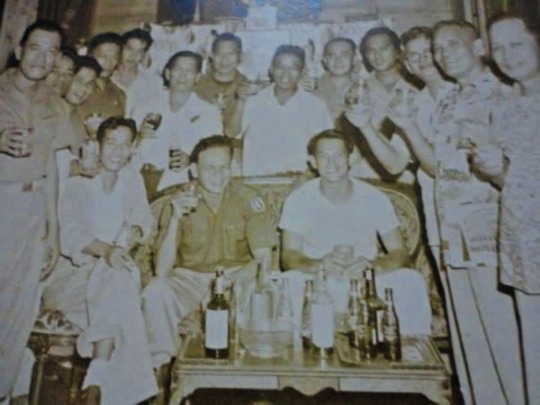

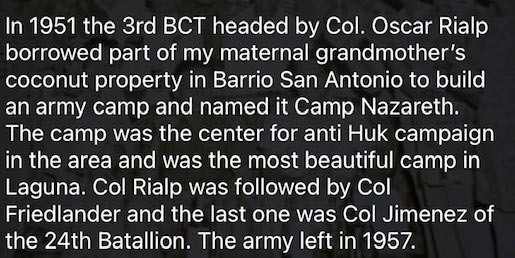
"The Most Beautiful (Army) Camp in Laguna", 1951-1957
In 1951, after the liberation of the Philippines from the Japanese and during the American Occupation, the USAFFE (United States Army Forces in the Far East) built an army camp on the 5-acre ancestral land of Doña Corazon Rivera, daughter of Don Felizardo Rivera, Pila's Founder. They named it Camp Nazareth. It was in the middle of a coconut plantation, surrounded by rice fields and lush green vegetation with an amazing view of the sunrise and sunset. At the camp, the army also built a tennis court and a natural stone swimming pool (later replaced with tiles).
Camp Nazareth was occupied by the 3rd Battalion Combat Team (BCT). The 3rd BCT was an elite force, a special forces unit for Counter-Guerilla Operations. The guerillas they were sent to "dismantle" were the "Huks", short for Hukbalahap (Hukbong Bayan laban sa Hapon), a group originally formed to fight against the Japanese forces during World War 2, but who were now against the American occupation.
The BCT occupied Camp Nazareth from 1951, and left in 1957.
In the 1960s, Doña Corazon gave the land to her granddaughter, Cora Relova (Founder of the Pila Historical Society Foundation). Camp Nazareth was renamed "Campo", and Cora had a house built on the property, designed by Ariston Nakpil, an architect and son of the first Miss Philippines, Anita Noble.
Campo is now the only ancestral family land and estate from Don Felizardo that is still in the possession of his direct descendants. It is also the residence of Cora's father, former Judge Ramiro Relova.
Info and photo from Cora Relova of the Pila Historical Society Foundation
Pila in World War 2
During World War 2, Pila had an underground unit, the 45th Regiment Hunters, formed to defend against the Japanese occupation. The Hunters' members included Lt. Perfecto Rivera (Bn. S-1 and later, Bn. Executive Office), Lt. Jose "Jobo" Fernandez (Asst. Bn S-1), Capt. Jose Relova (Bn. S-4), and Lt. Jose Madrigal (Asst. Bn. S-4). (Zaide 1979, Gleeck 1981:106-113, Mojica 1965:570-607). An ex-Mayor, Don Mesiton Rivera (1926-28) survived an attempt on his life by Japanese collaborators.
The American Liberation, 1945
Pila was the first town in Laguna to be liberated by the Americans in January, 1945, suffering minor damage, and Pileños opened their homes to war refugees from other damaged cities like Manila. (Zaide 1979, Gleeck 1981, Mojica 1965).
Pileños attributed the miracle of the town being spared from destruction during the war to the intercession of their patron saint and protector, St. Anthony of Padua. A year after the liberation of Pila from the Japanese, Pope Pius XII declared Saint Anthony a Doctor of the Universal Church with the title "Doctor Evangelicus" on January 16, 1946, and Pila adopted the honorific "Bayang Pinagpala", "The Blessed Town".
Santiago, Luciano P. R. “THE ROOTS OF PILA, LAGUNA: A SECULAR AND SPIRITUAL HISTORY OF THE TOWN (900 AD TO THE PRESENT).” Philippine Quarterly of Culture and Society, vol. 25, no. 3/4, University of San Carlos Publications, 1997, pp. 145-147, http://www.jstor.org/stable/29792218.

Pileños in the Manila Carnival, 1908-1939
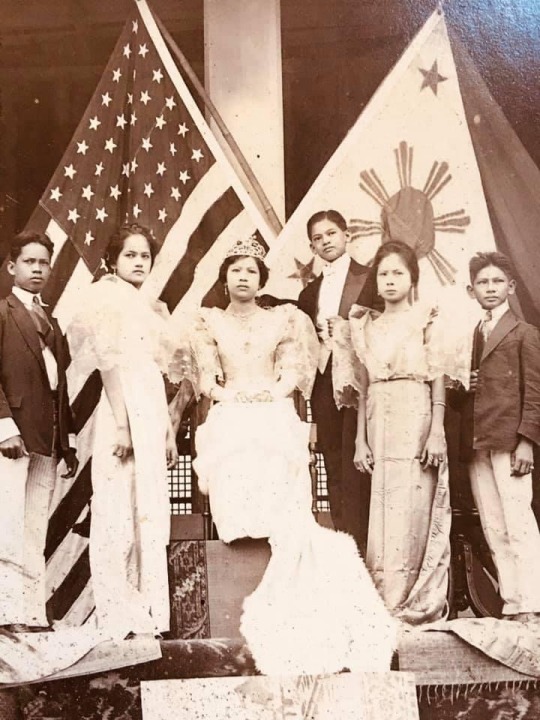
The Manila Carnival (1908-1939) was an annual festival held in Manila, Philippines, during the American Colonial Era and before WW2 to celebrate harmonious US-Philippine relations and showcased Philippine commercial, industrial and agricultural progress. The Carnival featured Carnival Queens of which women from Pila participated in.
Photos and info from Raffy Alava Antonio and the Pila Family Archives.
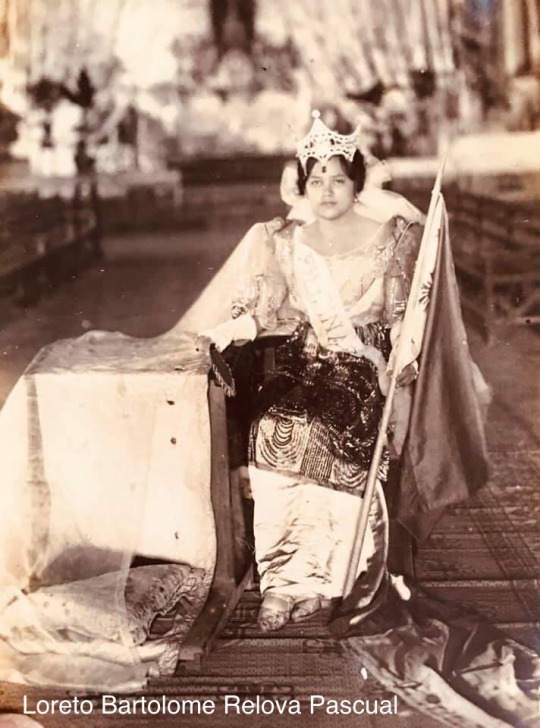
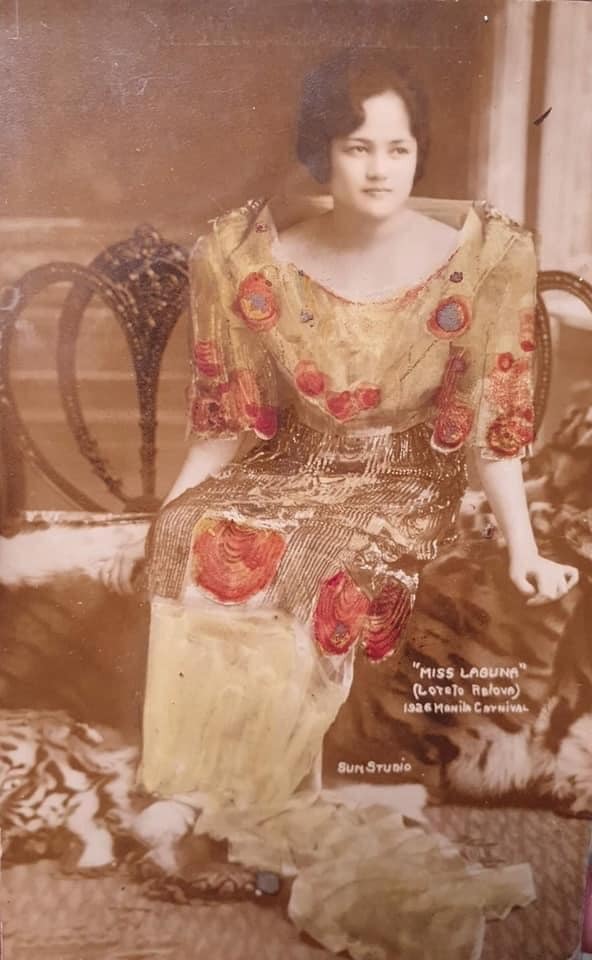
Loreto Relova, First "Miss Laguna", 1926 Manila Carnival.
Stories from the Japanese Occupation of Pila:

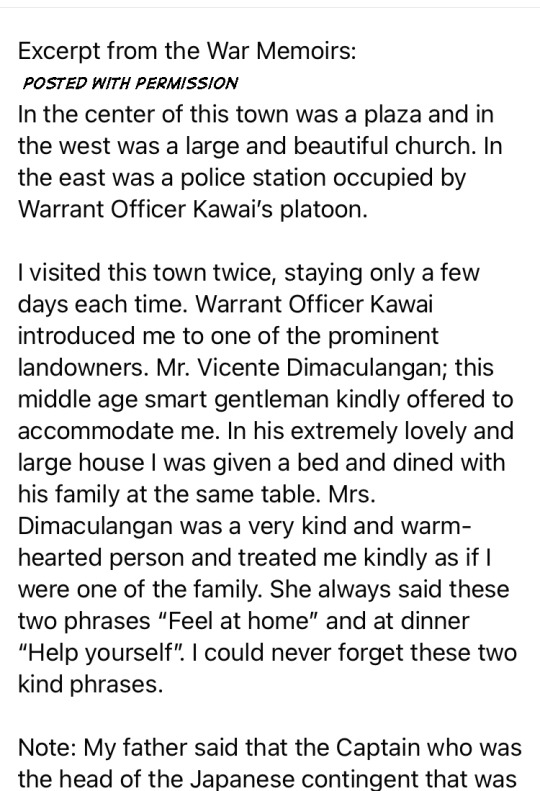

Pila History: The American Era Part 2
3 notes
·
View notes
Photo





Mount Samat National Shrine (Shrine of Valor)
Mount Samat National Shrine is a historical site designed by Architect Lorenzo del Castillo, built on 1966 in the Province of Bataan. It was built there with due consideration that Bataan played a vital role in the history of the Japanese invasion and Allied Forces bravery in the first quarter of 1942. The shrine epitomizes the gallant and heroic stand of the Filipino-American Forces (USAFFE) at Bataan, which was the scene of the most heroic defensive battles during World War II.
Mt. Samat is the smallest mountain in the Bataan Peninsula where you can find the largest cross in the world, which stands 92 meters and towers a 555-meter structure above sea level. Mt. Samat National Shrine has a colonnade and 428-step “bloodstones” leading up to the colossal cross. The memorial cross has a total of 42 floors equipped with an elevator.
0 notes